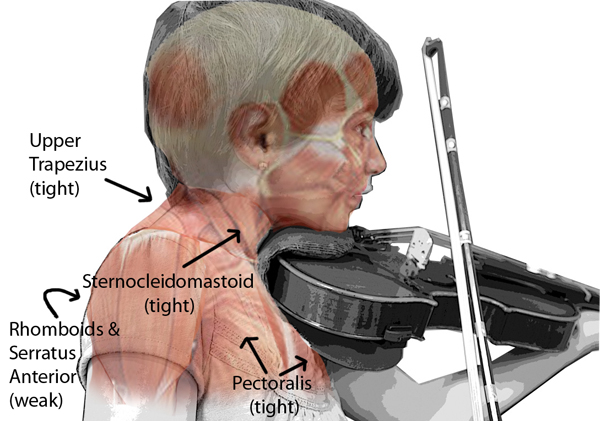Music and Chiropractic

Two of my most passionate interests in life are chiropractic and music. I began studying guitar as a teenager after watching the Beatles on The Ed Sullivan Show. Later I studied classical guitar. I found it to have unique postural demands resulting in neck and shoulder pain after an hour’s practice. On the positive side, playing classical guitar has also strengthened my hands and fingers which has served me well as a chiropractor.
The word chiropractic comes from the Greek word (chiro) meaning of the hand or hands, and the word (praxis) means to practice. In 1895 Dr. DD Palmer founded a healing practice done primarily by hand and aptly named the fledgling profession chiropractic.

When playing an instrument our posture is often dictated by the instrument that we are playing. Whether sitting or standing we are leaning and contorting to the whims of the music. Many instrumentalists have discovered that chiropractic care has enabled them to play for longer. In fact some people have used it to enhance their performance abilities overall. Being physically confident that one can maintain comfortability can lead to better sessions with your instrument. Research indicates that performance anxiety can affect up to 60% of musicians. When we experience less stress associated with pain we are distracted less. We are more comfortable, and we are better performers, and therefore better musicians.
A patient who has experienced back spasms for many years recently reminded me of something I hadn’t thought about. She pointed out how regular chiropractic care has enabled her to play the Concert Harp straight through many events which would have been interrupted by spasms in the past. “Regular adjustments keep the spasms from happening and I don’t have to worry about it especially for performances. I can manage it even after years of having it get in my way!”
For me chiropractic and music are bound together in a very intrinsic way. Whereas many medical practices hardly touch the patient, the chiropractor’s hands are his or her primary tools. Palpation is the skillful touching of the spinal column, the careful feeling of adjacent muscles and other structures of the body. This helps a chiropractor assess vertebral subluxations, muscle tone (tightness / spasms), and tissue temperature.
A chiropractor’s use of their hands to palpate the spine is an art. Like a guitarist running their fingers over the strings and frets, the fingers become familiar with where to press and how much pressure to apply. Tension in the paraspinal muscles are akin to the strings on a guitar, and individual vertebra are like the frets. Over time the chiropractor’s hands and fingers become more sensitive, more intuitive, delivering more effective chiropractic adjustments. Interesting research has shown that each individual vertebra even has it’s own tonal frequency! As one becomes more accomplished, one’s hands learn to play the spine and develop a healing touch.

Some of my patients will recognize that a chiropractor can adjust the wrist and hand and / or re-align the shoulders and neck. These adjustments can prompt healing from the effects of overcompensation due to holding an instrument. Clearly, having a vertebral alignment acts to counter some of the effects of long hours with an instrument. Also, building awareness for good postures and learning to strengthen ourselves with exercises can help us recompense. Utilizing specific exercises can even help musicians perform better! One example is a six step routine that the String Ovation Team uses. This was published by Connolly Music and also includes some instruction. At our practice Marysia meets with musicians for individual yoga sessions to develop specific techniques that can be used to overcome some of the challenges we face after years or even hours in a certain position.
Within my practice I can fine tune my patients with chiropractic adjustments, raise their awareness, and offer strengthening exercises for long term stabilization. That being said, it has always been important to accompany the experience of a chiropractic adjustment with good music. I have long collected sounds that fit the environment and played some of my favorites while seeing patients. It is a joy having patients add to the experience by contributing to the playlist with their own creations and recommendations! The connection to music is important. In these ways it helps me to make connections with patients and deliver better care overall. If you are a musician, see what a chiropractor can do for you!
– Dr. Robert Gensler
We have embedded one of our office playlists on Spotify for your enjoyment!